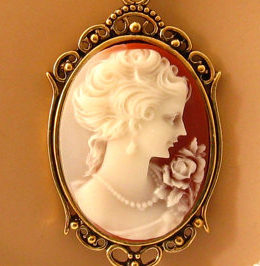
Guided Healing: Healing by Analogy
“I set before you Life and Death, Blessing and Curse. Choose Life…for you and your offspring.” Devarim/Deut. 30:19
We follow false gods: misguided love, confusion, dysfunctional family patterns, fear. We befriend falsehood, emotional tyranny, emptiness, or self-effacement. We think we are doing so to survive, and survive well. But our bodies know better–and react with pain, blockage, and stress.
In Guided Healing, we step back and see our choices from a higher place. We affirm the good quality in us from which the misguided dysfunction emanates. We use the power of analogy: just as we can choose Death and Pain, we can choose G-d and Life. Just as we see someone else choosing G-d and Life, we can choose G-d and Life as well.
Analogies help release our Free Will to choose to abandon false loyalties. In exposing false gods for what they are, we return to truth, freedom, love, creativity, healing–and our true souls.
Dalia
“My husband and father are trying to force me into a psychiatric hospital,” said “Dalia” over the phone. Dalia’s cousin, a client of mine, recommended she see me. This mother of 5 had had three breakdowns since the age of 16, in which she didn’t know where she was and became dysfunctional for long periods of time. Hubby and Dad wanted her treated “properly,” with drugs.
I knew that I must help her, that she needed my help, and that ultimately she would be a great healer herself. I thought back to a student formerly on drugs for being bipolar, but when she came to Midreshet B’erot Bat Ayin and found Torah and spirituality, she no longer needed her drugs. Dalia’s guardian angels were obviously asking for more than pills.
I treated Dalia for 2 1/2 hours. During the session, I was “told” that her breakdowns stemmed from an issue of abandonment by her mother. Indeed, it turned out later that her first breakdown at 16 happened during a 3-day high school tiyul shnati (field trip). Previously, she had been an A student, she said.
I looked back in time at her mother, her mother’s mother, her mother’s mother’s mother–trying to find one mother among Dalia’s ancestors who had been stable. Usually in an Ashkenazi family you don’t go back more than 4–or at most 7–generations before finding an intact family that can source generational love.
“I’ve gone back 12 or 13 generations on your mother’s side,” I told her, amazed, “and I did not find ONE generation that didn’t have a serious death.”
“Oh, yes,” she brushed off the information. “Didn’t you know that life in Yemen was very hard?”
I knew Yemenites ate an inedible fenugreek spread that was supposed to be so healthy the women would have babies into their 50s. What no one mentions is that so many Yemenite Jewesses didn’t make it to their 50s.
We continued to work and, just before my taxi arrived, her Third Eye opened.
She called me the following week from the psychiatric hospital. “What is the Third Eye?” she asked. I did my best in my 6th grade level Hebrew. “The Third Eye helps you see things in a deeper way, with more bina (understanding).”
I tried an example. “Let’s say you see a boy walking along. With your normal vision, you might just notice he is a boy walking. But with your Third Eye, you might notice that he is a good person, that he wants to do good in the world, and he is waiting for someone to show him how.”
“What if I see he is doing something bad?” she asked me nervously.
“You look at his qualities deeper, with your Third Eye,” I explained. “You tell him, ‘Oh, I see you are a good fighter. Did you know you can fight for good in the world, or you can choose to use your quality for bad–like to beat up small children.’ Then you help him direct his energies for good.”
This was simple. She liked it. But she still felt unsettled. “How will I know how to take care of my children?”
“How do you WANT to take care of your children?”
“With warmth, love….”
“What is stopping you from taking care of your children with warmth and love?”
“I am here, in this hospital….”
“Why are you in the hospital?”
“Because I don’t know how to function,” she answered, miserably. “What if I see myself doing something bad?”
Hashem had already provided the answer. “Then you tell yourself, with your Third Eye: ‘I have this quality. I can use it for good or for bad.’ And then you tell yourself how to use it for good.”
She was smiling over the phone. She understood now. “When will I get out of this place?” she asked me.
“Ask your neshama.”
“My neshama says, ‘In a week.'”
“Ask your neshama why you will get out in a week.”
“Because I will request it,” she answered.
“Do you feel you will be able to leave in a week and take care of your children?”
“Oh, yes!”
Dina
Dina was worried what to do next. She wanted to go to India but was afraid.
“Why are you afraid of going to India?” I asked.
“I might stop being religious,” she replied.
“Why do you think you might stop being religious?”
“Because I had a religious friend who went to India and she came back non-religious.”
“Ask her neshama, from your heart to her heart, why she became non-religious.”
“She feels free,” answered Dina.
“What does she need to feel free from?”
“Oh, everything. She can do what she feels like now.”
“What can she do now that she couldn’t do before?”
“She says she feels ‘cool’ now.”
“Uh-huh. Ask her what else makes her feel cool. Maybe she is very intuitive?”
“Oh, yes, she is very intuitive. She helps a lot of people!”
“Ask her why she doesn’t use her intuition to feel cool.”
“She does.”
“Ask her how she would rather feel cool–act non-religious or use her intuition to help people.”
“She’s thinking.”
It was clear that our exchange had helped clarify values for our friend’s neshama. Dina seemed ready to go down a more fortuitous path. But there was more–an analogy….
“Dina, we just showed what you will do when you get to India. You will find Israelis there like your friend who have lost their way and are trying to find themselves. You will use your own intuition to help them return to Judaism and to their own neshamot.
“Wow, that’s exciting!” said Dina. “I am really looking forward to going now!”
Young Mother from Serbia
“Are you healthy?” asked a young mother in a worried voice.
“Yes, why?”
“Well, my grandfather is sick and I was worried you are too.”
Her logic eluded me but clearly she needed someone to talk to.
“I’m not sick but maybe there IS something to talk about. Would you like to find a shady place to sit?”
She nodded gratefully. Her grandfather back in Serbia was ill from alcohol. He beat her grandmother often and she was upset over this, but more upset that she might lose her grandfather to his illness.
“Why are you upset to lose your grandfather if he beats your grandmother?”
She thought for a moment. “Because if I’m not upset, then people will think I am disloyal.”
“Do you believe in G-d?” I asked.
“Oh, YES!”
“Then tell those people, from your heart to their heart, ‘I am extremely loyal. And from now on, I am loyal to myself, my family, and to G-d.'”
The redirect worked. We had affirmed her loyalty but only toward Good. She looked relaxed and happy. A proud and satisfied smile swept across her face as she felt her self-worth and her new freedom from others’ twisted and tyrannical demands on her right to choose to whom to be loyal.
